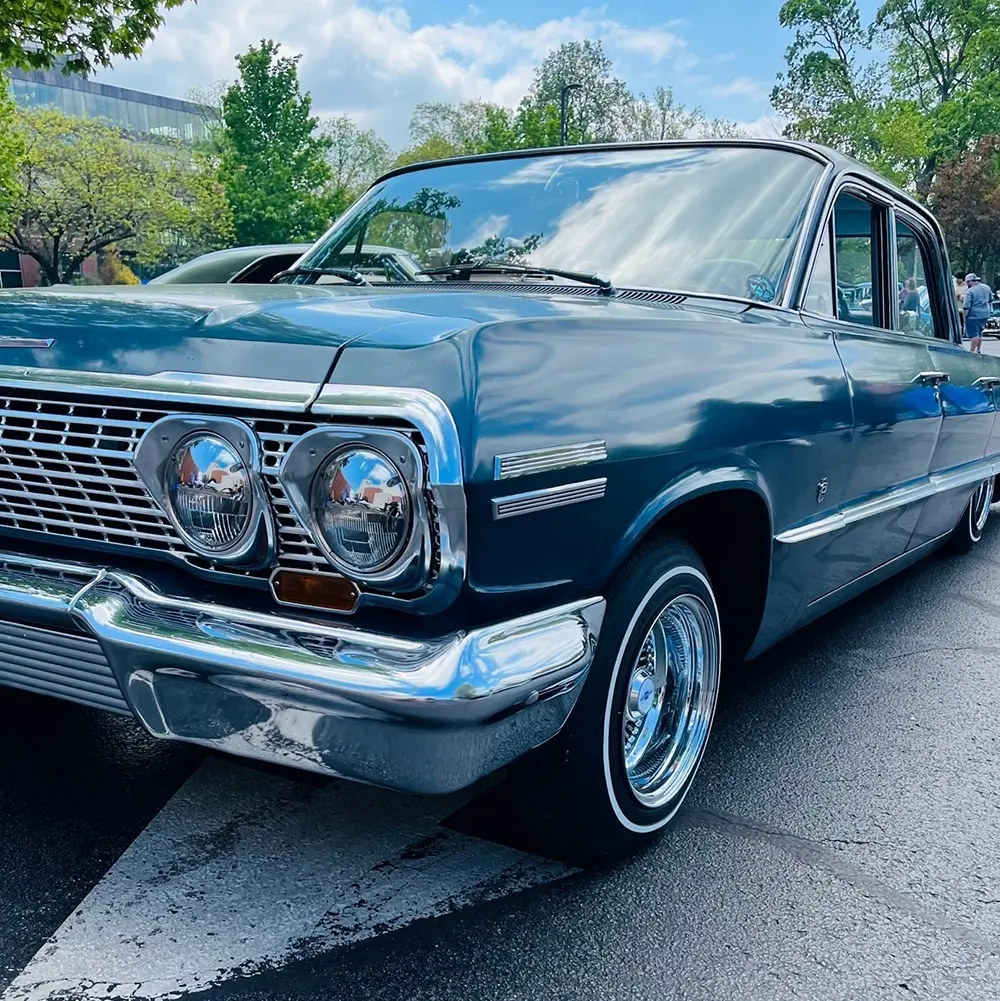 Motortopia Staff
.
December 18, 2024
.
EV Education
Motortopia Staff
.
December 18, 2024
.
EV Education

Everybody is scrambling to adapt to the EV wave sweeping the world of motoring. But as we race towards the crest, one question might be nagging at your heels (or tailpipe): the cost. Upfront, long-term, emotional, and physical. In this article, though, we’ll be discussing something more tangible: whether or not insuring an EV is more expensive than a traditional ICE car.

The Anatomy of EV Car Insurance Costs: What’s the Difference? When insurers set their rates, they look deeper than what’s beneath the hood. They evaluate the vehicle’s worth, repair costs, safety credentials, and, of course, the driver’s history. For electric vehicles, several factors come into play.
Electric vehicles carry a higher upfront price tag due to the technology and expensive components required to make them run. For example, the battery pack of an EV alone can cost more than $20,000. It’s not your typical Duracell double A. Repairing sophisticated parts isn’t cheap, and your insurance costs will reflect that with higher replacement and repair costs in premiums.
Electric vehicles represent peak automotive safety. Equipped with features like automatic emergency braking, lane-keeping assistance, and collision warning systems, EVs are designed to protect. This advanced safety tech can tilt insurance rates in your favor as an EV driver. Moreover, data suggests that EV drivers tend to drive more cautiously, which insurers appreciate. Nothin’ like being rewarded for your preference.
Insuring a converted EV can be a mixed bag. On one hand, the value of the converted vehicle may increase due to the cost of the conversion and the added technology. Additionally, the lifespan of your car can be doubled or even tripled, saving you tons of money in the long run.
On the other hand, the car’s unique nature and potential lack of comprehensive safety features compared to factory-built EVs can lead to higher premiums. Insurers will have to assess the quality of the conversion, the parts used, and the overall safety of the vehicle. That’s why we recommend using professional EV conversion shops—you’ll integrate your beloved car with the next-generation propulsion and technology of a mainstream EV while maintaining its original soul and spirit (and saving on the cost of buying a whole new vehicle).
Many insurers also have special policies regarding unique cars that aren’t based on their book value. What happens when a classic car, driven less than a thousand miles per year, becomes a daily driver after electrification? USAA has a category for these cars that’s based on the value of parts and labor once completed.
So, is EV car insurance more expensive? Often, yes, but not prohibitively so. The higher repair and replacement costs are balanced by potential discounts, incentives, and insurers accounting for advanced safety features.
For those venturing into EV conversions, insurance can be more complex but just as rewarding. Most major carriers won’t delineate from major modifications or replacement value for an OE vehicle. Some will accommodate based on “agreed value,” but that’s not a guarantee of full money back if you convert a $500 Civic into a $30,000 electric street racer.
Additionally, increased insurance costs can be further balanced by state and federal rebates for both factory EVs and conversion projects.
We hope zooming out and understanding these factors won’t leave you, an unsuspecting EV enthusiast, blindsided by insurance costs. Now, you’re armed with the knowledge to navigate the landscape effectively, ready to put your foot down on the phone with your insurance rep. Maybe. Either way, we here at Fuel2Electric are your source for anything and everything EV related—Get in touch with us today about conversion projects, questions, or compliments.
1940 GMC 1/2 ton pick up
This fully restored 1940 GMC ½ ton Pickup is ready for a new lease on life. Powered by the original 216 cubic inch inline-6 engine backed by a manual 4-speed transmission, the pickup is fully restored to original. Todd is a DIYer, and he expects his truck to charge fast and drive fast, at 100 plus miles per hour, delivering about 250-300 hp. Compared to the stock engine (80 hp) with a top speed of 45 mph, the 2,255-lb pickup should make a lot of heads turn.
1959 Cadillac Fleetwood
This EV conversion project is led by John, a senior at the University of North Florida. He and his teammates, including two Master students, Dylan and Cole, are literally leading the way for renewable energy and the future of power. They want the Fleetwood to remain rear-wheel drive and as powerful as today. They want to use as many used EV parts as possible and have no preference for motors or batteries, although a Tesla setup has been suggested. With a curb weight of 4,900 lbs., they expect a minimum range of 60 miles and 200-250 horsepower.
1962 Fiat Nuova 500
This fully restored 1962 Fiat Nuova 500 is ready for conversion. Refurbished and fresh-painted, it has upgraded brakes, new and stronger driveshafts, and a later Fiat 126 gearbox. According to Chris, it is an unusually sound car with very low mileage (35,000 miles)—“a small town old lady car.” Chris is a DIYer and needs a kit to convert the Nuova to electric himself.
What is the year, make, and model of your vehicle(s)?
OK
eGT913 EV System – Porsche 911|912 (66-89) (Order Deposit)
$6,995 deposit. Price: $69,950
Venom EV Conversion Kit
$1,000 deposit. Price: $39,999
Electric Vehicle Kit 235 Horse Power
$58,000.00
Follow Us On Instagram, Facebook, and LinkedIn @fuel2electric
We use cookies to enhance your browsing experience, serve personalized ads or content, and analyze our traffic. By clicking "Accept All", you consent to our use of cookies. Visit our Cookie Policy for more info.
Notifications
Share Link